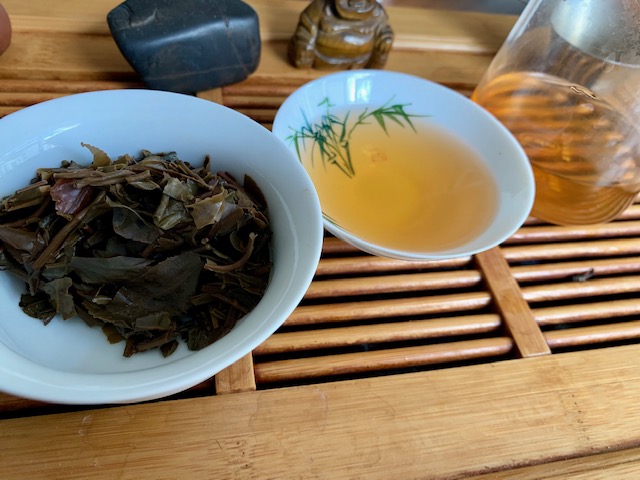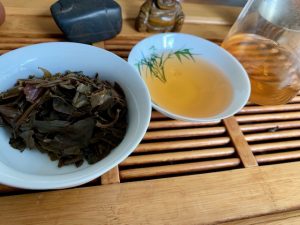
Pu Erh, this mystic and complicated genre of tea from Yunnan province, China. All tea will age, some gracefully and some not.
A Black tea or ‘Hong Cha’ for example will need around one month to six weeks after picking and processing to settle down before it’s truly drinkable. I mean you can drink the tea within this time but the true colours won’t be tasted. The black tea will continue to change over the course of its 5 year self life, some enhancements may be noted in some blacks and not much in others. After 5 years the tea will start to go stale. When a green tea gets to 30 years of age it will have some Chinese medicinal properties!
Raw Pu (if in cake form) will need a month or so to release the potential burnt notes associated with the steam pressing. Of course the spectrum of flavour within Pu Erh is vast, not all will age the same way. Some regions are widely noted for ‘best drinking early on’. This is mostly likely to be a more floral offering without much backbone of bitterness on which to grow on (think beaujolais wine). Like in beaudoux a sort after wine to age will have a lot of tannins, it will usually be deemed undrinkable for the first decade, a little like a Raw from Dayi!? I know people hate on tea-wine parallels but I do find they work well to express a point! Now a strong backbone isn’t the only factor in choosing a great tea to age. Of course the better material to start with will have the best chances. Complexity , smooth texture And any other interesting characteristic of note are great markers towards something that might be very special in the future. Now this is where things get complicated, unless one is au fait with a very standardised recipe, example any long-standing Dayi cakes, it’s actually really hard to figure out exactly how any tea will end up. You will probably end up surprised on how a cake can transform in ways you couldn’t imagine, this I find is part of the beauty of this genre. Now where a teacake has been aged will also play a huge part in its growth, the classic Kunming/Guangdong storage wars! And for note there is no right or wrong way to store a cake, Kunming tea culture lends itself to Kunming storage and quandong also. To give a broad idea as to how a Kunming storage cake is after 15 years would be to say that the floral tones have completely disappeared, honey like sweetness. The colour of the broth would be a light brown with a wonderful soft texture. The T will also become much more in fusible over time. A good ageing or aged T cancer past 25 infusions quite easily.
Pictured: 2004 Yong Pin Hao Pu Erh tea, drinking in 2019 at infusion 12. It’s still nice and sweet!

Guangdong storage will accelerate the ageing process due to the extreme humidity and heat of this area. You could potentially expect similar age profile as a Kunming stored cake in five years. Further ageing in this region (naturally with no air-conditioning) The tea will be more earthy , Deep, potentially forest floor and mushroom notes alongside honey like sweetness. Please note this is a broad example of expectations. One criticism I have of Guangdong storage is that the longer a raw Pu Erh Rests in this region the more of its original characteristics will be eroded. I have had the benefits of tasting Hong Kong raw pu erh of different years so I’m going back to the 90s, 80s and 70s. I can say that over the decades the tea is resting in this region Will slowly slowly end up tasting extremely similar to each other. On the flipside Kunming Tea has the benefit of slowly ageing gracefully while keeping hold of its original nature. This can produce some extremely interesting offerings when searching for 15 to 20-year-old teas. I hope this blog has helped with trying to understand what to expect in an ageing tea. The best way to educate oneself is to get out there and try lots and lots of samples, there really is no alternative. Happy Cupping!
